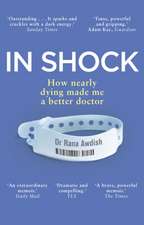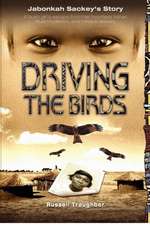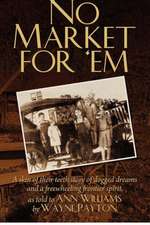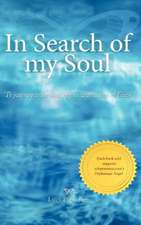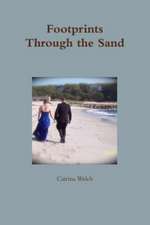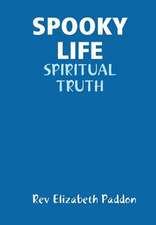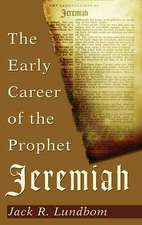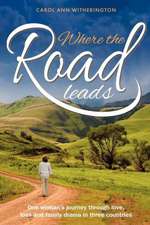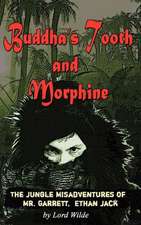Working Stiff: Two Years, 262 Bodies, and the Making of a Medical Examiner
Autor Judy Melinek MD, T.J. Mitchellen Limba Engleză Paperback – 2 iul 2015
Preț: 55.78 lei
Preț vechi: 69.69 lei
-20% Nou
10.68€ • 11.60$ • 8.97£
Carte disponibilă
Livrare economică 04-16 aprilie
Livrare express 15-21 martie pentru 33.23 lei
Specificații
ISBN-10: 1476727260
Pagini: 288
Dimensiuni: 140 x 213 x 18 mm
Greutate: 0.23 kg
Editura: Scribner
Colecția Scribner
Notă biografică
Judy Melinek is a forensic pathologist and an associate clinical professor at UCSF Medical Center. She earned her college degree from Harvard and received her medical degree and pathology residency training at UCLA. Her coauthor and husband T.J. Mitchell graduated with an English degree from Harvard and worked in the film industry before becoming a full-time stay-at-home dad in 2000. They have three children, and have lived in and worked in San Francisco since 2004.
Extras
1
This Can Only End Badly
“Remember: This can only end badly.” That’s what my husband says anytime I start a story. He’s right.
So. This carpenter is sitting on a sidewalk in Midtown Manhattan with his buddies, half a dozen subcontractors in hard hats sipping their coffees before the morning shift gets started. The remains of a hurricane blew over the city the day before, halting construction, but now it’s back to business on the office tower they’ve been building for eight months.
As the sun comes up and the traffic din grows, a new noise punctures the hum of taxis and buses: a metallic creak, not immediately menacing. The creak turns into a groan, and somebody yells. The workers can’t hear too well over the diesel noise and gusting wind, but they can tell the voice is directed at them. The groan sharpensto a screech. The men look up—then jump to their feet and sprint off, their coffee flying everywhere. The carpenter chooses the wrong direction.
With an earthshaking crash, the derrick of a 383-foot-tall construction crane slams down on James Friarson’s head.
I arrived at this gruesome scene two hours later with a team of MLIs, medicolegal investigators from the New York City Office of Chief Medical Examiner. The crane had fallen directly across a busy intersection at rush hour and the police had shut it down, snarling traffic in all directions. The MLI driving the morgue van cursed like a sailor as he inched us the last few blocks to the cordon line. Medicolegal investigators are the medical examiner’s first responders, going to the site of an untimely death, examining and documenting everything there, and transporting the body back to the city morgue for autopsy. I was starting a monthlong program designed to introduce young doctors to the world of forensic death investigation and had never worked outside a hospital. “Doc,” the MLI behind the wheel said to me at one hopelessly gridlocked corner, “I hope you don’t turn out to be a black cloud. Yesterday all we had to do was scoop up one little old lady from Beth Israel ER. Today, we get this clusterfuck.”
“Watch your step,” a police officer warned when I got out of the van. The steel boom had punched a foot-deep hole in the sidewalk when it came down on Friarson. A hard hat was still there, lying on its side in a pool of blood and brains, coffee and doughnuts. I had spent the previous four years training as a hospital pathologist in a fluorescent-lit world of sterile labs and blue scrubs. Now I found myself at a windy crime scene in the middle of Manhattan rush hour, gore on the sidewalk, blue lights and yellow tape, a crowd of gawkers, grim cops, and coworkers who kept using the word “clusterfuck.”
I was hooked.
“How did it happen?” my husband, T.J., wanted to know when I got home.
“The crane crushed his head.”
He winced. “I mean, how come it toppled over?” We were at the small playground downstairs from the apartment, watching our toddler son, Danny, arrange all of the battered plastic trucks and rusty tricycles in a line, making a train.
“The crane was strapped down overnight because of the hurricane warning yesterday. The operator either forgot or never knew, and I guess he didn’t check it. He started the engine, pushed the throttle, and nothing happened. So he gunned it—and the straps broke.”
“Oh, man,” T.J. said, rubbing his forehead. “Now it’s a catapult.”
“Exactly. The crane went up, hung there for a second—and crumpled over itself backwards.”
“Jesus. What about the driver?”
“What do you mean?”
“Was the crane driver hurt?”
“Oh. I don’t know.”
“Well, what about the other workers?”
“I don’t know,” I repeated. “None of them were dead.”
T.J. was looking off into the trees. “Where did this happen?”
“I told you, on Sixth Avenue.”
“And what?”
“I don’t remember! What does it matter? You’re going to avoid that corner because a crane could drop on your head?”
“Well?”
“It doesn’t happen that often, believe me.” Our raised voices had drawn the attention of the other parents on the bench.
“Civilians,” T.J. warned under his breath, reminding me that no one on a playground full of preschoolers wanted to hear our discussion of a grisly workplace accident. “Did he have a wife, kids?” he asked quietly.
“He had a wife. I don’t know about kids.”
My husband looked at me askance.
“Look, I don’t deal with these things! The investigators take care of all that. I only have to worry about the body.”
“Okay. So tell me about the body.”
As part of my medical school training I had done autopsies before—but they were all clinical, patients who had died in the hospital. I had never seen a corpse like this one. “We had to do a full autopsy because it’s a workplace accident. It was amazing. He was a big guy, muscular. No heart disease, vessels clean. Not a scratch on his limbs or torso—but his head looked like an egg you smash on the counter. We even call it an ‘eggshell skull fracture.’ Isn’t that cool?”
“No,” T.J. replied, suddenly ashen. “No, it isn’t.”
I’m not a ghoulish person. I’m a guileless, sunny optimist, in fact. When I first started training in death investigation, T.J. worried my new job would change the way I looked at the world. He feared that after a few months of hearing about the myriad ways New Yorkers die, the two of us would start looking up nervously for window air conditioners to fall on our heads. Maybe we’d steer Danny’s stroller around sidewalk grates instead of rolling over them. We would, he was sure, never again set foot in murderous Central Park. “You’re going to turn me into one of those crazy people who leaves the house wearing a surgical mask and gloves,” he declared during a West Nile virus scare.
Instead, my experience had the opposite effect. It freed me—and, eventually, my husband as well—from our six o’clock news phobias. Once I became an eyewitness to death, I found that nearly every unexpected fatality I investigated was either the result of something dangerously mundane, or of something predictably hazardous.
So don’t jaywalk. Wear your seat belt when you drive. Better yet, stay out of your car and get some exercise. Watch your weight. If you’re a smoker, stop right now. If you aren’t, don’t start. Guns put holes in people. Drugs are bad. You know that yellow line on the subway platform? It’s there for a reason. Staying alive, as it turns out, is mostly common sense.
Mostly. As I would also learn at the New York City Office of Chief Medical Examiner, undetected anatomical defects do occasionally cause otherwise healthy people to drop dead. One-in-a-million fatal diseases crop up, and New York has eight million people. There are open manholes. Stray bullets. There are crane accidents.
“I don’t understand how you can do it,” friends—even fellow physicians—tell me. But all doctors learn to objectify their patients to a certain extent. You have to suppress your emotional responses or you wouldn’t be able to do your job. In some ways it’s easier for me, because a dead body really is an object, no longer a person at all. More important, that dead body is not my only patient. The survivors are the ones who really matter. I work for them too.
I didn’t start off wanting to be a forensic pathologist. You don’t say to yourself in second grade, “When I grow up, I want to cut up dead people.” It’s not what you think a doctor should do. A doctor should heal people. My dad was that kind of doctor. He was the chief of emergency room psychiatry at Jacobi Medical Center in the Bronx. My father instilled in me a fascination with how the human body works. He had kept all his medical school textbooks, andwhen I started asking questions he would pull those tomes off their high shelf so we could explore the anatomical drawings together. The books were explorers’ charts, and he moved with such ease over them, with such assurance and enthusiasm, that I figured if I became a doctor I could sail those seas with him.
I never got the chance. My father committed suicide at age thirty-eight. I was thirteen.
People kept coming up to me during his funeral and saying the same thing: “I’m so sorry.” I hated that. It roused me out of my numbness, to anger. All I could think to say was, “Why are you saying you’re sorry? It’s not your fault!” It was his fault alone. My father was a psychiatrist and knew full well, professionally and personally, that he should have sought help. He knew the protocol; he had asked his own patients the three diagnostic questions all of us learn in medical school when we believe someone is having suicidal ideations. First, “Do you want to hurt yourself or kill yourself?” If the answer is yes, then you are supposed to ask, “Do you have a plan?” If again the patient answers yes, the final question is, “What is that plan?” If your patient has a credible suicide plan, he or she needs to be hospitalized. My father’s suicide plan was to hang himself, an act that requires considerable determination. After he succeeded in carrying out that plan, I spent many years angry at him, for betraying himself and for abandoning me.
Today, when I tell the families and loved ones of a suicide that I understand exactly what they’re going through—and why—they believe me. Many have told me it helps them come to terms with it. Over the years some of these family members have continued to call me, the doctor who was on the phone with them on the single worst day of their lives, to include me in the celebration of graduations, weddings, new grandchildren. You miss the person whowas taken away from you most deeply during the times of greatest joy. Getting those calls, thank-you cards, and birth announcements—exclamation marks, wrinkled newborns, new life—is the most rewarding part of my job.
This personal experience with death did not cause me to choose a profession steeped in it. My dad’s suicide led me to embrace life—to celebrate it and cling to it. I came to a career performing autopsies in a roundabout way.
When I graduated from UCLA medical school in 1996 I wanted to be a surgeon, and I began a surgical residency at a teaching hospital in Boston. The program had a reputation for working its surgery trainees brutally; but the senior residents all assured me, conspiratorially, that the payoff outweighed the short-term cost. “You work like a dog for five years. Tough it out. When you’re done and you become an attending physician, you’ve got it made. The hours are good, you save lives all day long, and you make a lot of money doing it.” I bought the pitch.
Before long I started noticing that many of the surgeons’ offices had a cot folded away in a corner. “Who keeps a bed in his office? Somebody who never has time to go home and sleep, that’s who,” a veteran nurse pointed out. My workweek started at four thirty on a Monday morning and ended at five thirty Tuesday evening—a 36-hour shift. A 24-hour shift would follow it, then another 36, and the week would end with a 12-hour shift. I got one full day off every two weeks. That was the standard 108-hour work schedule. Sometimes it was worse. On several occasions I was wielding a scalpel for 60 straight hours relieved only by brief naps. I clocked a few 130-hour workweeks.
T.J. started buying lots of eggs, red meat, protein shakes, boxes of high-calorie snack bars he could stick into the pockets of my labcoat. He had to cram as much fuel into me as he could during the predawn gloom of breakfast, and again when I dropped into a chair at the dinner table, still in my dirty scrubs, the following night. During my fifteen-minute commute home, I’d often take catnaps at red lights—“I’ll just close my eyes for a minute”—and wake to the sound of the guy behind me laying on his horn, the light green.
Boston is T.J.’s hometown. His family was overjoyed when we moved back there from Los Angeles. We were eighteen when we started dating—college freshmen, practically high school sweethearts—and had entered our twenties happy, and serious about each other. I wanted to get married—but he had begun to have his doubts. He doubted, I would later find out, that he wanted to be married to a surgeon. I was fading into a pallid, shuffling specter and was steadily losing the man I loved, and who loved me.
Then, one day in September, I fainted on the job at the end of a thirty-six-hour shift. I dropped to the linoleum right next to a patient in his sickbed and awoke on a gurney being wheeled to the emergency room, an intravenous glucose drip in my arm. The diagnosis was exhaustion and dehydration. The head of the residency program, my boss, came in and stood next to the IV drip bag, obviously impatient but not visibly concerned. “Okay,” he said, “you’re just tired. Go home, take twelve hours off, and sleep. Drink plenty of fluids, all right?” I was in a daze, wiped out and ashamed, and could only nod back. “I’ll get somebody to cover your next shift,” the surgeon told me, his back to my bed as he hurried out the door.
As soon as the boss had left me alone in that ER bed, I was no longer ashamed. I was infuriated. Nobody should be expected to practice clinical medicine, much less perform surgery, on the three hours’ sleep I had been living with. But I had wanted to be a surgeonsince I first picked up a scalpel in medical school. I had been in the operating room and watched lives saved, and wasn’t ready to give it up just because my body gave out on me one time. I went back to work.
Less than a month later I was forced to consider the hazards my patients might be facing at the hands of their exhausted doctors. The hospital pharmacy paged me during morning rounds. When I called in, a woman’s voice asked, “Do you really want to put two hundred units of insulin in this patient’s hyperal, Doctor?”
I had had a full night’s sleep and was as alert as I ever got to be, but I still blurted out the first thing that came to mind. “What? No! That’d kill a horse!”
Hyperal, short for hyperalimentation, is a type of intravenous nutritional supply that puts food energy directly into your bloodstream. It has to include a carefully calibrated number of insulin units—fifteen or twenty units, for instance—so that your body can maintain its healthy cycle of fuel storage and release. If instead you were to receive two hundred units of insulin, you would pass out from hypoglycemia and die within minutes of a fatal cardiac arrhythmia, a terminal seizure, or both.
“I didn’t write that order, did I?”
“What’s your name?”
“Dr. Melinek.”
“Melinek. Let’s see.” There was a shuffling of papers on the other end of the line. “No,” the woman finally replied, and I was able to breathe again.
“Okay,” I said. “How many units of insulin did the patient get in his hyperal yesterday?”
“Twenty units.”
“And the day before?”
“Twenty.”
“Let’s just make it twenty units, then.”
“Right,” confirmed the pharmacy technician, who had just saved somebody’s life.
The doctor who wrote that order during the last shift was a fellow surgery resident. He had almost killed a patient by writing an extra zero on a nutrition order. I didn’t fill out an incident report about the near-fatal mistake. Nobody had been hurt and nobody had died, so there was no incident. During one of those 130-hour workweeks, had I hurt patients without even knowing it? Had I killed anyone?
The end of my surgical career came three months later, when I caught the flu—ordinary seasonal influenza—and tried to call in sick. “There’s no one to take up the slack this time,” my boss scolded, as though my trip to the hospital ER in September had been some sort of shirking ploy. I swallowed two Tylenol, stuck the rest of the bottle in my pocket, and went to work.
The shift was a blur. The Tylenol wore off after a couple of hours, and I started shaking with chills. I took a moment to slip into an empty nurses’ alcove and measure my temperature: 102º. While I was gulping two more pills, an emergency came through the door, a young woman with acute appendicitis. Somebody thrust the medical chart in my hand as I followed the gurney down to the operating room. The patient’s fever was 101.2º—lower than mine.
My hands didn’t shake. I opened her up, tied off the appendix, cut it out, and sutured the site of excision. The room was swaying, and I was sweating in sheets—but I took a deep breath, focused all my attention on the needle, and finished stitching. That was the sixty-first operation I performed during six months of surgical residency, and the last. The minute I scrubbed out of the operatingroom, I told the chief resident I was too sick to work and had to go home right away. “Don’t feel too bad,” she tried to comfort me. “I once had a miscarriage while on call.”
I called T.J.—feverish, despondent, bawling. When he arrived at the residents’ call room, he closed and locked the door without a word. Then he crouched down by my bunk and asked, “Do you want to quit?” I confessed that I did. “Good,” T.J. said with conviction. “You should.”
“But what are we going to do? What hospital is going to take me if I quit?”
“Doesn’t matter,” he said. “Not anymore. Quit.”
He was right. It didn’t matter. All that mattered was getting out of there. I resigned my position as a surgery resident the next day. T.J. and I started spending time together again. On Valentine’s Day of 1997 we were walking down a street we had traversed on our first date, nine years before to the day, back when we were teenagers. When we reached the spot where we had first held hands, he stopped, took both of mine, and lowered one knee to the icy sidewalk. I was surprised, delighted, giggling helplessly. “Would you give me an answer, yes or no?” he pleaded. “My knee is getting cold.”
I was happy for the first time in nearly a year—but scared too. I had learned only what kind of doctor I did not want to be, and was convinced no hospital would take me as a new resident in any specialty now that I was damaged goods. The happiest I’d been in medical school was during the pathology rotation. The science was fascinating, the cases engaging, and the doctors seemed to have stable lives. The director of the pathology residency program at UCLA had tried to recruit me during my last year of medical school. “No, no,” I had told her back in the day, driven and cocksure. “I’m going to be a surgeon.”
More than a year later, I called her to ask if she knew of any pathology jobs, anywhere, for a failed surgery resident.
“Can you start here in July?” she asked.
“What do you mean?”
“Judy, I’ll keep a pathology residency position for you right here at UCLA if you’ll start in July.”
Even more shocking was T.J.’s enthusiasm for the idea. “You’ll be leaving your family behind again,” I pointed out.
“Doctor,” my fiancé replied, “I’ve followed you to hell and back. I’ll follow you to Los Angeles.”
Recenzii
"Fascinating case studies and a refreshing irreverence toward death and autopsies make Working Stiff a funny and engrossing read."
“Working Stiff is an engrossing and revealing glimpse into the making of a medical examiner with a searing insider's view into working at the New York Medical Examiner's Office during and just after 9/11. The story of how the author dealt with her father's suicide during childhood and later had to deal with suicides as part of her duties is wrenching and compelling."
"A riveting read, at once compassionate and morbidly fascinating."
"Working Stiff is an eye-opening, gripping account of the life of a forensic pathologist working in New York City. Whether dealing with routine autopsies, surviving relatives, or the catastrophe of September 11, Dr. Judy Melinek reveals the dignity of being human in the face of death."
"In this engrossing tale of how Melinek became a forensic pathologist, she pulls back the sheet to show readers just what goes on after someone dies... Armchair detectives and would-be forensic pathologists will find Melinek’s well-written account to be inspiring and engaging."
"Both chilling and heart-warming at the same time, Judy Melinek's account explains how empathy and humanity are as important working with the dead as they are with the living. She strikes the balance just right in helping us better understand what we most fear, yet still fear it all the same."
"Melinek’s enthusiasm for her calling is always apparent, and her writing is un–self-consciously bouncy, absorbed and mordant (though not caustic).... A transfixing account of death, from the mundane to the oddly hair-raising."
Working Stiff is the grossest book you'll ever love. But it is also so much more than that: Seamlessly fusing memoir, science journalism, riveting whodunit mysteries, and light humor about a dark topic, Working Stiff is a relentlessly fascinating and informative book from the first page to the last. Judy Melinek--whether she's re-enacting assaults in a courtroom while heavily pregnant, or fighting with lazy homicide detectives, or solving amazing forensic mysteries through the ghastly things she does with her corpses--is an unfailingly charming and even inspiring guide to the world of medical examiners. A remarkable achievement by Mitchell and Melinek.
"Spellbinding. . . . Melinek is movingly empathetic toward the families of victims. . . . An unforgettable story."
"Working Stiff is a page-turning, engrossing book that reveals a hidden world and shows that the work of understanding death is actually a labor of life.”
Descriere
"Fun...and full of smart science. Fans of CSI--the real kind--will want to read it" (The Washington Post): A young forensic pathologist's "rookie season" as a NYC medical examiner, and the hair-raising cases that shaped her as a physician and human being.
Just two months before the September 11 terrorist attacks, Dr. Judy Melinek began her training as a New York City forensic pathologist. While her husband and their toddler held down the home front, Judy threw herself into the fascinating world of death investigation--performing autopsies, investigating death scenes, counseling grieving relatives. Working Stiff chronicles Judy's two years of training, taking readers behind the police tape of some of the most harrowing deaths in the Big Apple, including a firsthand account of the events of September 11, the subsequent anthrax bio-terrorism attack, and the disastrous crash of American Airlines Flight 587.
An unvarnished portrait of the daily life of medical examiners--complete with grisly anecdotes, chilling crime scenes, and a welcome dose of gallows humor--Working Stiff offers a glimpse into the daily life of one of America's most arduous professions, and the unexpected challenges of shuttling between the domains of the living and the dead. The body never lies--and through the murders, accidents, and suicides that land on her table, Dr. Melinek lays bare the truth behind the glamorized depictions of autopsy work on television to reveal the secret story of the real morgue. "Haunting and illuminating...the stories from her average workdays...transfix the reader with their demonstration that medical science can diagnose and console long after the heartbeat stops" (The New York Times).


